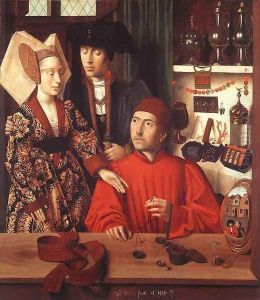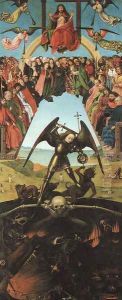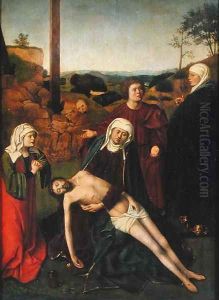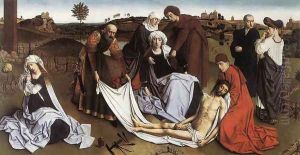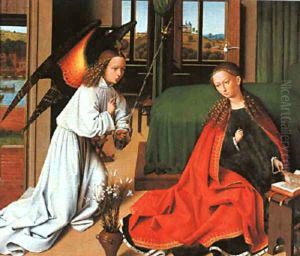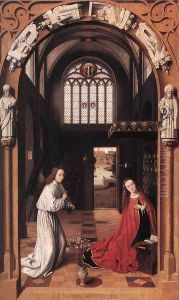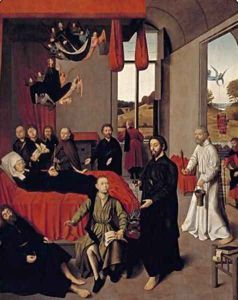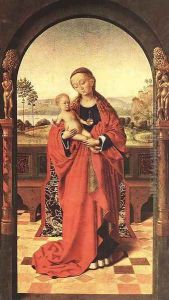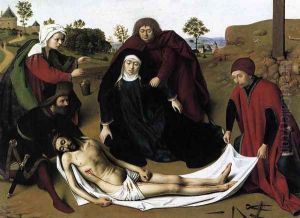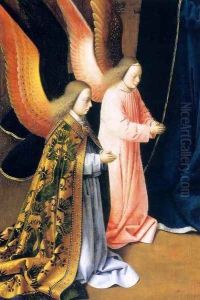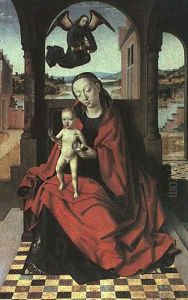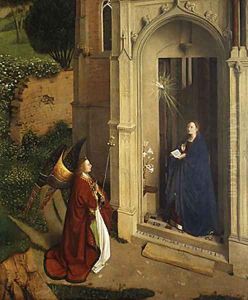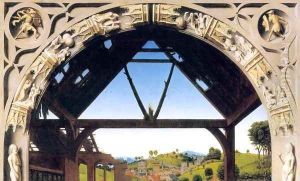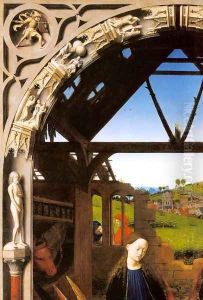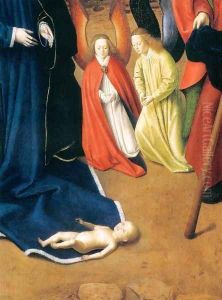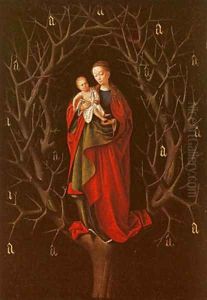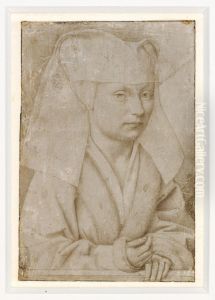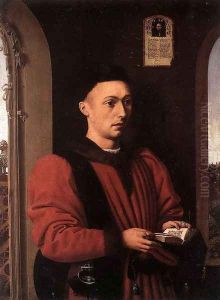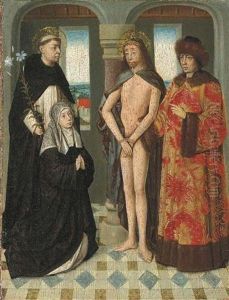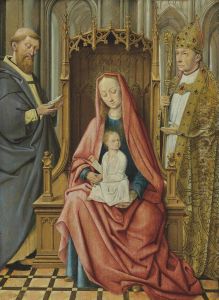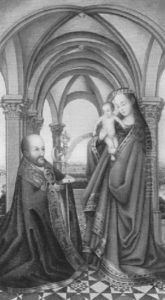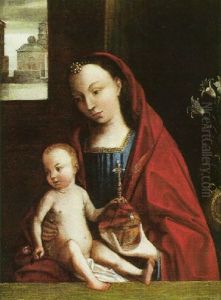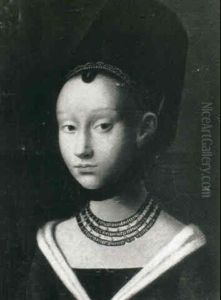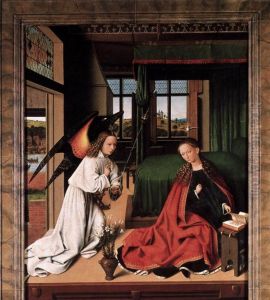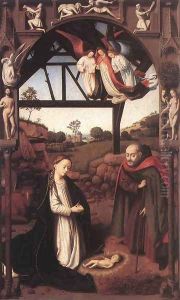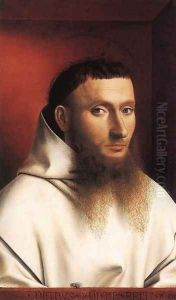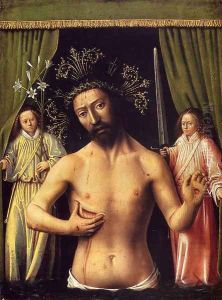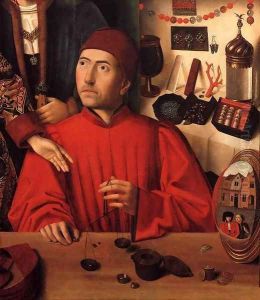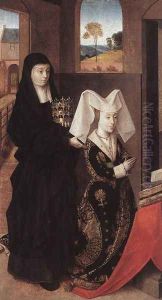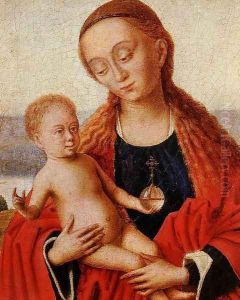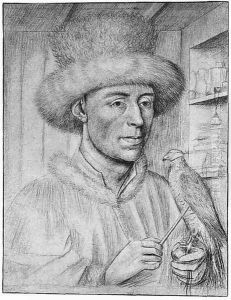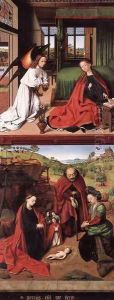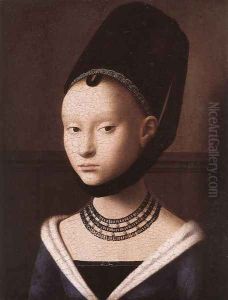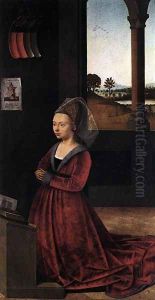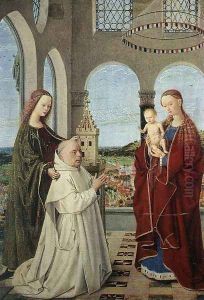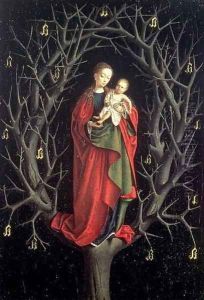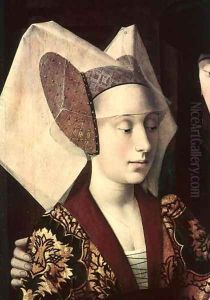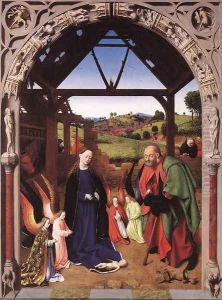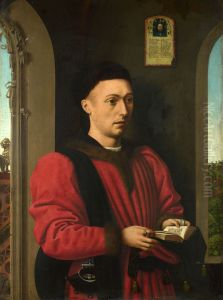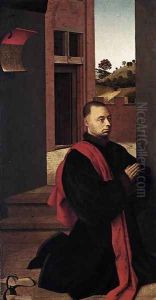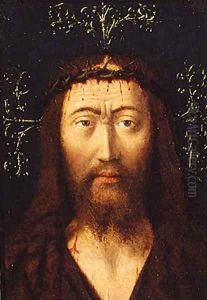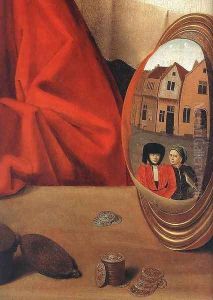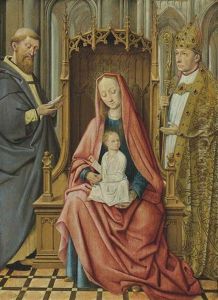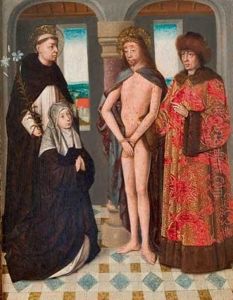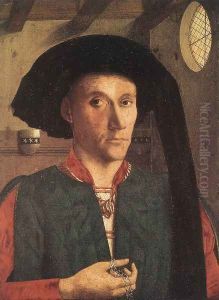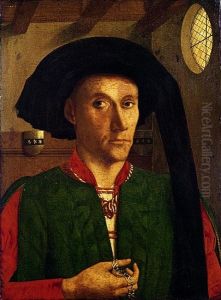Petrus Christus Paintings
Petrus Christus was a Flemish painter active in Bruges from 1444, where he became a citizen in that year until his death. He is considered one of the most significant figures of the Northern Renaissance and a successor of Jan van Eyck, whose influence is evident in Christus’s work. While his exact birthplace and date are not known, he is believed to have been born in Baarle, near Antwerp, between 1410 and 1420.
Christus’s work is characterized by a keen attention to detail and a high degree of technical skill. He was innovative in his use of perspective and space, helping to introduce single-point perspective to Northern European painting, which was a significant development in the history of art. His works are often noted for their serene and contemplative nature, combined with rich symbolism and complex iconography.
Among his most famous works are the 'Portrait of a Carthusian' (1446) and the 'Lamentation' (1450), which showcase his meticulous approach to composition and his ability to convey deep emotion. His paintings often featured religious themes, but he also produced secular works and portraits. The 'Goldsmith in his Shop' (1449) is another celebrated painting, notable for its intricate details and use of light.
Christus’s reputation and influence spread beyond Flanders, and he was known to have impacted other artists of the time, including Hans Memling. Unfortunately, his work was somewhat overshadowed by the more famous van Eyck during his lifetime and for centuries after. However, art historians have since re-evaluated his contribution to the Northern Renaissance, recognizing his role in the development of Netherlandish painting.
Petrus Christus died in Bruges between 1475 and 1476. While not as prolific as some of his contemporaries, his relatively small body of surviving work continues to be celebrated for its precision, innovation, and the window it provides into 15th-century Flemish society and culture.
